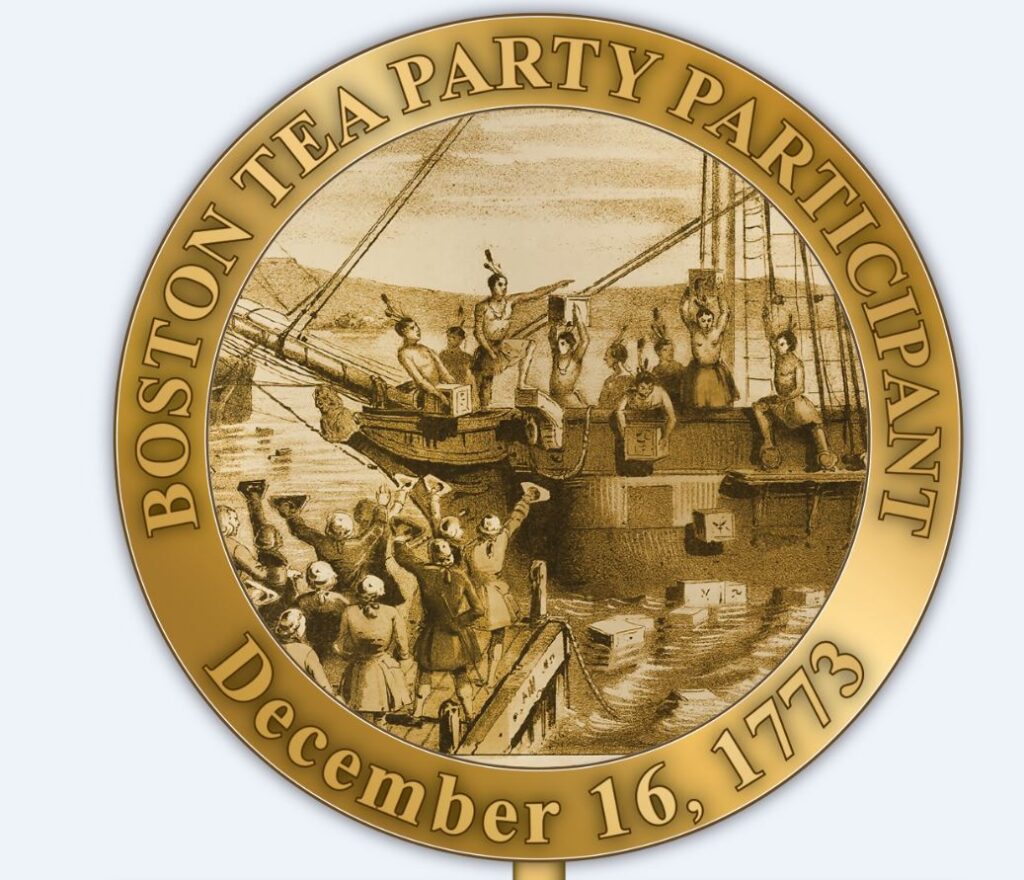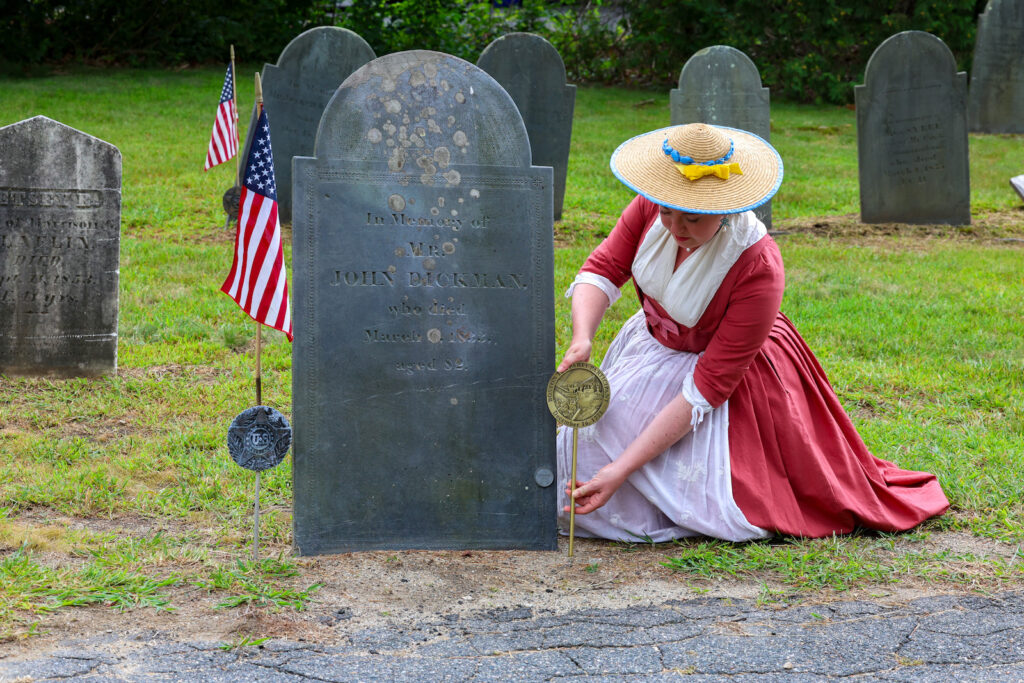
A commemorative brass marker with this design will be placed at the grave of a Tea Party participant who is buried in Hopkinton.
“Friends! Brethren! Countrymen! That worst of plagues, the detested tea, shipped for this port by the East India Company, is now arrived in the harbor.”
So proclaimed the pamphlet distributed throughout Boston on Monday morning, Nov. 29, 1773, after some 100-plus colonists destroyed 340 chests of tea in an act of protest that led to the American Revolution.
The citizens who participated in that momentous event — most of whom were in their 20s, and some of them just teenagers — changed the course of history. One such then-young man, John Dickman (who was born in 1749 or 1750 and died in 1833), is interred in Hopkinton’s Evergreen Cemetery.
The Boston Tea Party Participant Grave Marker Project will recognize Dickman with a commemorative marker at a small ceremony open to the public on Sunday, Aug. 27 at 11 a.m. Hosts of the event will answer questions and present photo opportunities after the marker is placed at the cemetery, which is situated between Wood Street and Fruit Street/Cunningham Street.
The Grave Marker Project is a collaborative effort between the Boston Tea Party Ships & Museum and Revolution 250 to commemorate known participants with honorary grave markers by the event’s 250th anniversary in 2023.
A list of those identified can be found at the Boston Tea Party Historical Society website (Boston-tea-party.org). However, as noted on the site: “Not all of the participants are known, as some carried the secret of their participation to the end of their days.”
Kristin Harris, a research coordinator for the Boston Tea Party Ships & Museum, is working to track down and verify participants’ resting places. She credited fellow project researcher Jonathan Lane of Revolution 250 with discovering Dickman’s location.
Finding graves and verifying records is a long and sometimes arduous process. Information can be found through genealogical websites, such as Ancestry.com, as well as paper records stored in local municipalities.
“I’m very lucky in the fact that now, many things are digitized,” Harris remarked. “I use different genealogical websites to corroborate as much as I can. Once I have enough information, I take it to the town — whether it’s a town manager or cemetery commissioner or historical society — and I’ll send them what I’ve found, and they can confirm it with me through their records.
“It’s really fun, and it’s really rewarding, especially when somebody didn’t know that someone [buried in their town’s cemetery] was a Tea Party participant,” she added.
In the course of their research, the team uncovered photos of a letter written by Dickman’s son-in-law that describes Dickman’s account of the sounds of splashing on the fateful night. The letter had been stored in Houghton Library at Harvard University.
It’s those details that give folks an “in-depth look into the people behind the event, rather than just the event itself,” Harris said, noting that one of the main goals of the project is to recognize the lesser-known names.
“You know, when anyone thinks of the Tea Party, they think of Dr. Joseph Warren or Samuel Adams or Paul Revere — they don’t think of John Dickman,” she lamented. “They don’t think about all the apprentices and blacksmiths and barrel makers who were at this event. So, our goal has been to take these stories … and really hammer home that it is the common people who make change.”















The Dickman house site is just off Fruit St., and has a historical marker erected by Harrison Bograd in 2022 as part of his Eagle Scout project.
Thanks for that info, John, and thanks to Harrison for this effort. Very cool!